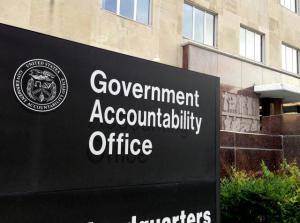

The data set includes more than 300,000 buildings, laboratories, warehouses and other structures.
Subscribe to Federal Drive’s daily audio interviews on iTunes or PodcastOne.
The Veterans Affairs Department owns a historical hotel at 49 Rue Pierre Charron, in Paris. There’s a Ben Hur Road in Baton Rouge, Louisiana, and the Agriculture Department owns a few labs and warehouses along it. 1100 Pennsylvania Avenue Northwest is the address of the Old Post Office Pavilion, owned by GSA and leased by the Trump Hotel in Washington, D.C.
Thanks to the General Services Administration’s publication of Federal Real Property Profile Management System [FRPP MS] data, everyone can explore the obscure, interesting and ordinary aspects of the government’s real estate portfolio.
“GSA is proud of the work completed, in concert with our partners at other federal agencies, to make this data public for the first time,” said Giancarlo Brizzi, acting associate administrator for GSA’s Office of Governmentwide Policy. “Expanding the number of federal agencies reporting detailed data beyond the 24 Chief Financial Officers Act agencies to more than 50 federal agencies and making that data available for review by lawmakers, stakeholders and the American public is a big step forward in increasing the transparency of the federal government’s real property footprint.”
The data set is made up of fiscal 2016 data, and follows requirements set by the Federal Assets Sales and Transfer Act of 2016 [FASTA]. The law sets up a mechanism where the administration can identify underused or vacant federal property. It establishes a Public Buildings Reform Board, which will recommend specific property to consolidate, reconfigure or sell.
GAO reported earlier this year that, according to GSA’s FRPP database, in 2015, 23 agencies reported more than 7,000 excess or underutilized properties.
The “Freeze the Footprint” policy, which required agencies to freeze their real property footprint, cut 24.7 million square feet from the inventory between 2013 and 2015, saving the government about $300 million in rent, and operations and maintenance costs.
In 2015, OMB released a National Strategy for Real Property, which requires agencies to implement a five-year rolling planning process that sets annual square foot reduction and disposal targets and prioritizes the disposal of unneeded and inefficiently used properties.
A Reduce the Footprint (RTF) companion policy also was introduced.
“Publicizing this information on 300,000 federal assets will make it easier to identify property that can be disposed of, sold or repurposed,” Brizzi said in a statement to Federal News Radio. “GSA looks forward to continuing to work with our partners in other agencies, Congress and the American public to ensure this data is as accurate and useful as possible as we carry out our mission to provide the facilities federal agencies need to carry out their important work at the best value to the taxpayers.”
The data represents the government’s inventory as of Sept. 30, 2016. 2017 data is scheduled for publishing in spring 2018.
The set isn’t a complete inventory, as FASTA allows the exclusion of property based on national security and Freedom of Information Act exclusions.
The national security exclusion is a factor the Project on Government Oversight is always concerned about, said POGO Senior Policy Analyst Peter Tyler.
“Not just because it’s maybe hidden behind closed doors, it’s also at times an overused exemption,” Tyler said. “Things do not have to be a national security secret just because it’s Department of Defense property. It often gets lumped in because it’s easier. That’s something we want to watch and double check.”
Tyler said another problem is there’s just missing data in any agency. That’s something the Government Accountability Office highlighted in its High-Risk List, when it said some agencies estimated, rather than determined, actual operating costs for each building, since these agencies don’t maintain information on costs for specific buildings.
“As a result, standardizing data has been challenging since agencies have applied different approaches to collecting data that align closely with their mission but that in some cases are inconsistent with existing GSA guidance,” GAO said.
“That’s one thing that outside organizations should look at with this data,” Tyler said. “Is the data complete and is it accurate?”
That’s not to say this data release isn’t a win for government transparency. According to the High-Risk List, the government’s real property portfolio includes about 273,000 buildings that are leased or owned, and cost billions of dollars to operate and maintain.
“The number one benefit that this provides I think is the transparency,” said Curtis Kalin, spokesman for Citizens Against Government Waste. “The more data that is available for scrutiny, the better.”
Knowing how many properties the federal government owns and leases, where they are located, and how much is being spent on rent, are the first steps toward ensuring taxpayer money isn’t wasted, Kalin said.
Kalin said while an Excel spreadsheet hundreds of thousands of entries long might be daunting for the layman, that’s where third parties like CAGW come in and translate those numbers.
The same goes for POGO.
“The success story of this is that Congress required a publicly accessible data set and they’ve done that, it is downloadable, it’s not just a bunch of pieces of paper that we have to request through the FOIA process, so kudos to them for doing that,” Tyler said. “Could it be better, sure, there’s always better things to be done — more web-based, user-friendly searchablility could be good — but credit where credit’s due. This is a true publicly accessible data base and that’s great.”
Tyler said he was curious what the next steps will be for Congress and how it uses the information to help reduce the federal footprint and dispose of surplus property.
In a statement from House Transportation and Infrastructure Committee Chairman Bill Shuster (R-Penn.), the congressman said the data set “will provide Congress with an important tool in its oversight of the management of federal properties.”
Copyright © 2025 Federal News Network. All rights reserved. This website is not intended for users located within the European Economic Area.



